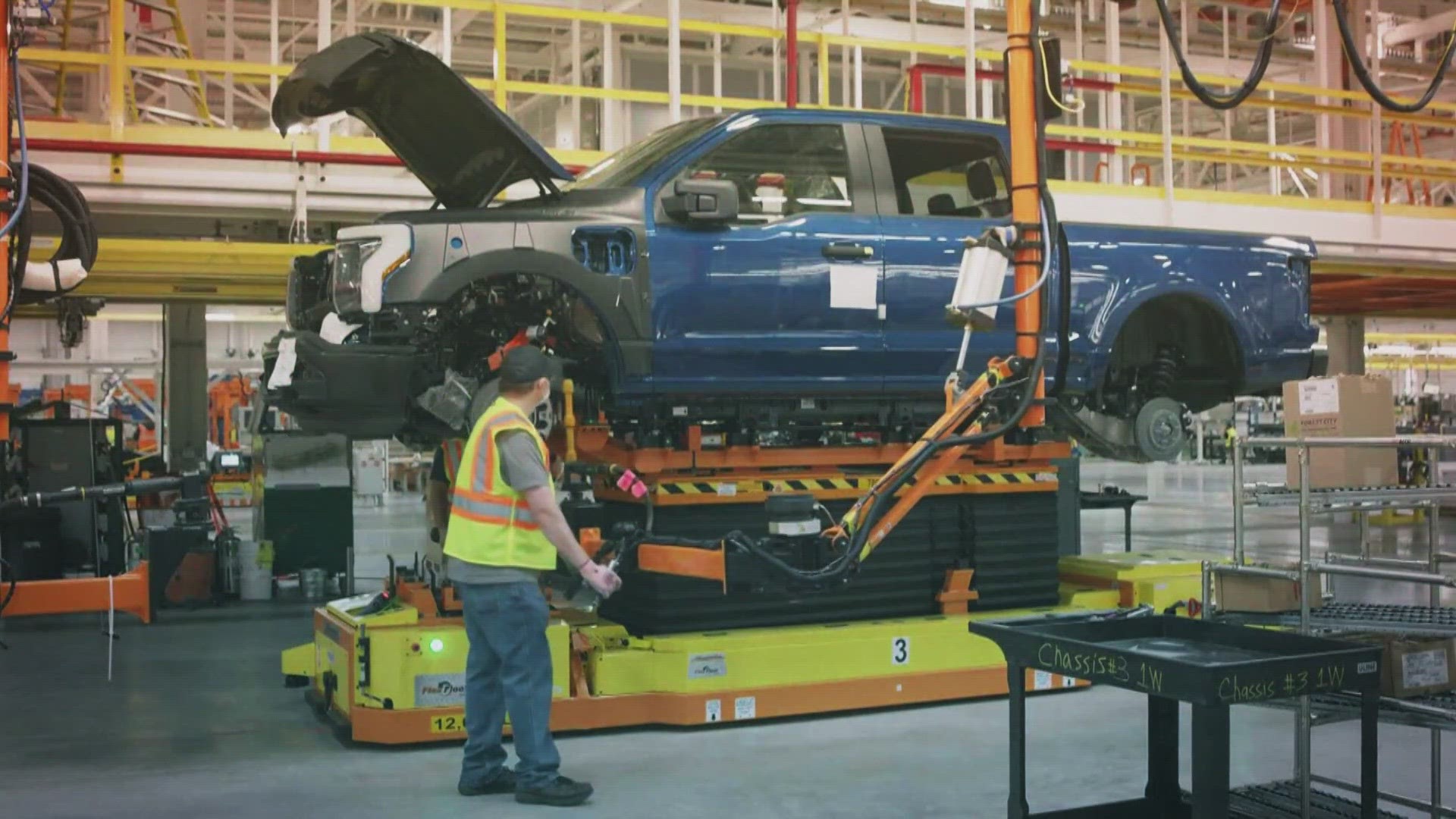PORTLAND, Maine — As the U.S. moves toward electrification of transportation, more and more car manufacturers are unveiling EV versions of trucks and SUVs. Although these vehicles still produce lower carbon emissions over their lifetimes compared to their gas counterparts, they are still significantly less efficient and environmentally friendly than smaller EVs.
There are two main factors at work here: weight and aerodynamics. SUVs and trucks tend to be heavier than sedans and compact cars. The heavier the vehicle, the more energy is needed to propel it. That increased energy demand means the vehicles must be outfitted with a larger battery in order to reach the desired range. Those batteries, however, are extremely heavy themselves, leading to a vicious cycle.
Aerodynamics plays a role in a similar way. The higher the drag coefficient, the more a vehicle must essentially "plow" through the air. This plowing leads to reduced efficiency and reduced range. This effect is especially noticeable at highway speeds, exactly when most drivers will need the range most.
With this in mind, why are car companies making these vehicles? In a nutshell, because that’s what consumers want.
In 1975, pickup trucks, minivans, and SUVs combined made up only 19 percent of the U.S. vehicle market with the remaining 81 percent belonging to cars. As of 2020, trucks, minivans, and SUVs have surged to 69 percent of the market with cars now in the minority with 31 percent.
Several automakers are unveiling new, large EVs in the coming years: Kia EV9, Cadillac Escalade iQ, Chevrolet Silverado EV, Fisker Ocean, and GMC Sierra EV, just to name a few. Meanwhile, there are a few models trying to reset the American concept of what is aesthetically pleasing and functional: the Hyundai Ioniq 6, for example, actually advertises its slippery 0.21 drag coefficient.
Overall, bigger batteries powering heavier vehicles greatly reduce the positive carbon impact of an EV, not to mention these large batteries require more precious materials to create, which, as we recently reported on, has societal and environmental impacts of their own. An extreme example: According to the American Council for an Energy Efficient Economy, a 9,000-pound GMC Hummer EV generates more emissions per mile than a gas-powered Chevy Malibu.
Ultimately, if we wish to maximize the environmental benefit of electric vehicles, car companies may have to alter what consumers look for in a new vehicle.
And that may prove a bigger hurdle than range anxiety.

